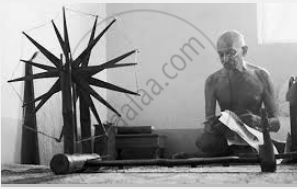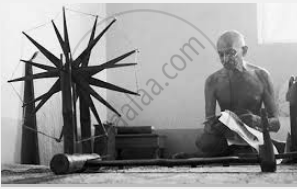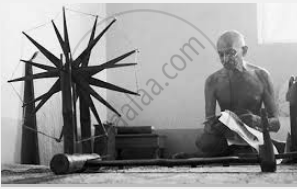Advertisements
Advertisements
प्रश्न
With reference to Gandhiji, discuss his views on the following issue:
Truth and non-violence.
उत्तर
- Satyagraha is a combination of two Sanskrit words-Satya (truth) and agraha (eagerness). Satyagraha is based on the twin principles of truth and non-violence.
- A satyagrahi was one who firmly believed in truth and nonviolence and who would resist evil at all costs. A satyagrahi was peaceful, fearless, and strong.
- He/She would hate evil but not the ‘evildoer’. In the fight for justice and truth, the satyagrahi would willingly accept suffering and be ready to make sacrifices.
- The suffering and patience of the satyagrahi were expected to bring about a change of heart in the enemy. The idea behind satyagraha was not to destroy the enemy but the transform and enlighten him.
- Gandhiji insisted on non-violent methods of struggle. He believed that non-violence was the weapon of the strong and could be effectively used to resist armed attacks by the enemy. A satyagrahi was expected to follow peaceful methods even under extreme provocation.
संबंधित प्रश्न
Fill in the blank:
In February 1947, the British government declared that power would be transferred to the Indians by __________.
Choose the correct answer:
The Non-Cooperation Movement was launched by Gandhiji in ___________.
Choose the correct answer:
A resolution declaring ‘Poorns Swaraj was declared as its goal at the _____________ session of the Congress
Choose the correct answer:
The Cripps Mission was sent to India in 1942 when the British empire was under the threat of a___________
What technique of resistance did Gandhiji evolve in South Africa? What was its basic principle?
Answer the following question briefly
With reference to Gandhiji, discuss his views on the following issues: Hindu-Muslim unity
This is the picture of an Indian leader who was known as the ‘Father of the Nation’,

Identify the person.
This is the picture of an Indian leader who was known as the ‘Father of the Nation’,

Why is Mahatma Gandhi called the leader of the masses?
This is the picture of an Indian leader who was known as the ‘Father of the Nation’,

Mention the features of his non-violent struggle against the British.
State whether the following statement is True or False:
The Charkha was a symbol of progress.
